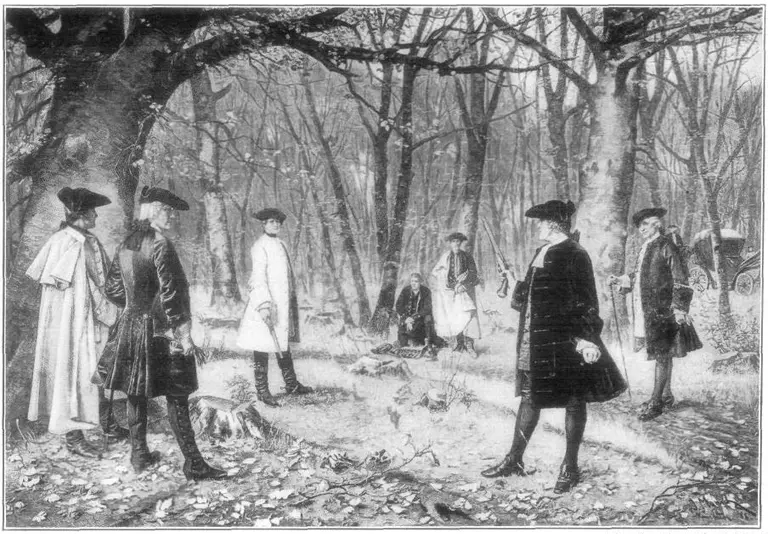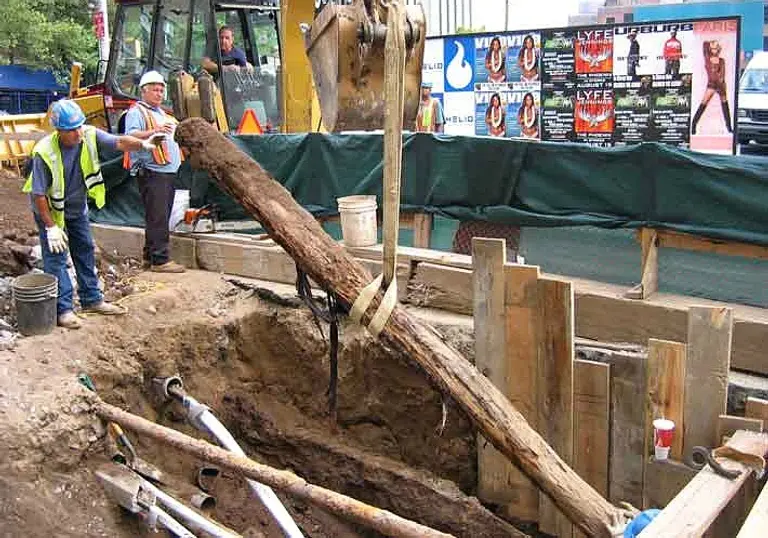
An illustration of the duel between Alexander Hamilton and Aaron Burr, via Wiki Commons
Before the duel: Aaron Burr and Alexander Hamilton’s NYC haunts
Get all the history

An illustration of the duel between Alexander Hamilton and Aaron Burr, via Wiki Commons

In 2006, construction crews discovered a 13-foot section of the wooden water mains under Beekman Street near the South Street Seaport, photo courtesy of Chrysalis Archaeology